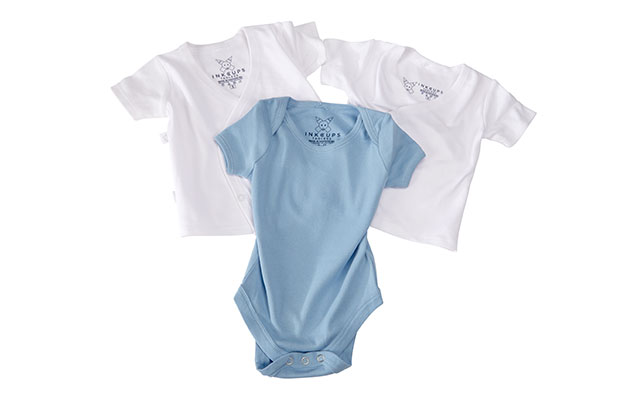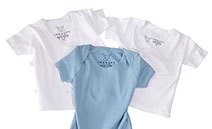- Equipment
- Inks & Supplies
- Services
- Applications
- Tagless
- Resources
- About Us
- Contact Us

Within the realm of babywear and children’s clothing, there is a growing movement known as sensory-friendly clothing, which is gaining popularity and recognition. Coined as such for children with sensory sensitivities, companies that are employing such practices are opting for tagless neck labels in lieu of itchy neck tags, as well as different crafty options for prickly seams, uncomfortable waistbands, and restrictive fabrics.
At some point in every child’s upbringing there is a fight about a thick sweater, a waistband that digs in on a pair of shorts or a dress with an itchy tag. This inconvenience to some can be monumental to kids with diagnoses like Autism, Sensory-Processing Disorder, or other special needs. Sensory-friendly clothing promotes improved sensory regulation, reduces stress and anxiety, and enhances overall well-being and comfort for those who wear them.
Sensory-friendly clothing typically exhibits several key characteristics. These include:
By incorporating these features, clothing designed with sensory sensitivities in mind aims to enhance comfort and reduce potential sources of discomfort. An easy first step toward sensory friendly clothing for any company would be to ditch traditional neck labels. Pad print directly onto the collar of a shirt, a tagless label.
 Forgo a label sewn into a garment by directly pad printing onto the fabric. Compared to other methods a pad printed tagless label offers lower costs, averaging at $0.003 per print, lower utility consumption, time savings, and improved quality.
Forgo a label sewn into a garment by directly pad printing onto the fabric. Compared to other methods a pad printed tagless label offers lower costs, averaging at $0.003 per print, lower utility consumption, time savings, and improved quality.
The pad printing process is simple. The pad printer mounts a plate with the etched logo onto it. An ink cup filled with garment ink slides over the plate, filling the etched areas of the logo and removing ink elsewhere while the pad travels simultaneously, then presses into the inked logo etched plate, returns to over the garment, and finally presses the image into the garment. Pad printing lays down such a thin layer of ink that it embeds the print into the fibers. Due to this, pad printing dry time is almost instant, allowing the printer to continually print and stack without further drying.
For children with special needs, sensory sensitivities, or adaptive clothing needs, the need for tagless labels is huge. A child’s entire morning or even the entire day can be disrupted if their clothes do not meet their specific needs. Tagless labels offer a solution by allowing printing on a wide range of clothing and various materials. The necessary information typically found on a neck label can be directly printed on the shirt’s neck, inside pants, or anywhere else it is required.
When it comes to tagless applications, pad printers come in different sizes and color options to suit specific needs. Typically, garment tags are relatively small, and it is uncommon to find tags with more than two colors. In this regard, the B100, B150, and 2200-PS are particularly well-suited as ideal pad printers for tagless printing.
The B100 is a single color, tabletop machine that prints images up to 80 mm in diameter. Printing at full speed, the B100’s output is between 900 to 1300 impressions per hour, but keep in mind that the operator speed does impact the machines speed.
The large image single color care label pad printer, the B150 prints images up to 140 mm in diameter. For those wishing to print larger images, the B150 is the ideal pad printer, and still a cost-effective solution. Versatile, the B150 also accepts two smaller ink cup sizes, allowing this machine to print smaller images of 80 mm in diameter to conserve ink.
As for a 2-color option, the 2200-PS pad printer with pad slide allows for the garment to stay stationary, enabling perfect second color registration. This self-standing unit can print two color tagless labels up to 80 mm in diameter.
Tagless garment ink is specially formulated to promote adhesion onto certain fabrics, to pass the intended threshold of washing machine runs, and to display soft-hands properties. This means that upon touch it is unnoticeable. Tagless inks like the SB Eco Series, the SB Series Ink, and the SB Brite Opaque Series ink are all great options for printing care tags. The SB Eco Series is the latest addition to our pad printing inks and it is most notably free of Cyclohexanone, Alogens, Aromatic Hydrocarbons and more.
The rise of sensory-friendly clothing in the babywear and children’s clothing industry is providing a valuable solution for children with sensory sensitivities. Through the incorporation of tagless labels, comfortable materials, seamless designs, and other sensory-friendly features, these garments not only promote improved sensory regulation and reduce stress and anxiety but also enhance overall comfort and well-being. By embracing pad printing techniques for tagless labels, companies can offer customized and convenient options. This growing movement towards sensory-friendly clothing is fostering greater inclusivity and comfort in children’s fashion. To find out more, or to connect with your local sales representative, contact us today.
Back to Blog Home
Add Your Comment